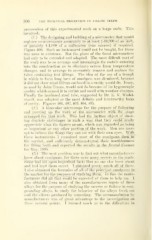Page 632 - My FlipBook
P. 632
306 : THE TECHNICAL PROCEDURES IN FILLING TEETH.
prosecution of this experimental work on a large scale. This
involved
(1.) The designing and building of a micrometer that would
register measurements accurately to at least 1-10,000 of an inch,
or possibly 1-1,000 of a millimeter (one micron) if required.
Figure 400. Such an insti'ument could not be bought, for there
was none in existence. But the plans of the finest micrometers
had only to be extended and adapted. The most difficult part of
the work was to so arrange and intermingle the metals entering
into the construction as to eliminate errors from temperature
changes, and to arrange to accurately remove and replace the
tubes containing test fillings. The idea of the use of a trough
in which to form long bars of amalgam was dismissed, because
it did not show what fillings enclosed in a cavity would do. Ivory,
as used by John Tomes, would not do because of its hygroscopic
quality which caused it to shrink and swell with weather changes.
Finally the hardened steel tube, suggested by Dr. E. K. Wedel-
staedt, was adopted as the most definite and trustworthy form
of cavity. Figures 401, 402, 403, 404, 405.
(2.) A binocular microscope for the purpose of following
and proving up the work of the micrometer with the stage
arranged for that work. This had the further object of show-
ing dentists shrinkages in such a way that they could really
appreciate what the figures meant, which was regarded as being
as important as any other i)ortion of the work. Men are more
apt to believe the things they can see with their own eyes. With
these instruments I examined most of the amalgams then in
the market, and sufficiently demonstrated their worthlessness
for filling teeth and reported the results in the Dental Cosmos
for May, 1895.
The next problem was to find out what manufacturers
(.3.)
knew about amalgams, for there were many secrets in the trade.
Some had hit upon important facts that no one else knew about
and had kept them secret. I obtained pretty much all of those.
I also obtained the formulas of all of the principal amalgams in
the market for the purpose of studying them. Tn this the manu-
facturers did all that could be expected of them to help me. I
also obtained from many of the manufacturers ingots of these
alloys for the ])urpose of studying the success or failure in com-
pounding alloys, to study the behavior of the alloys fresh cut
and the effects produced by annealing. The accommodation by
manufacturers was of great advantage to the investigation on
these several i)oints. I learned much as to the difficulties in


